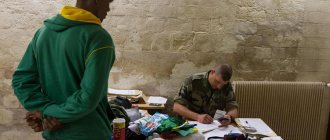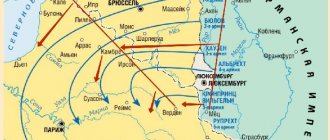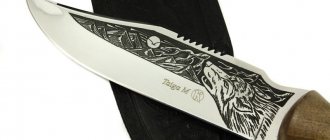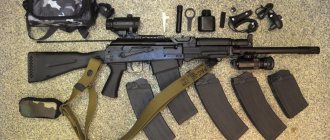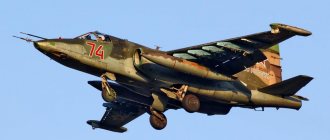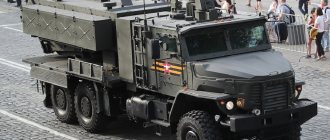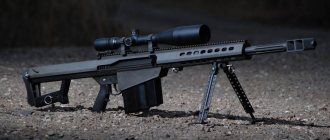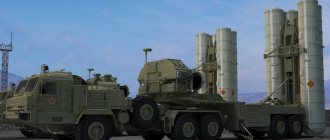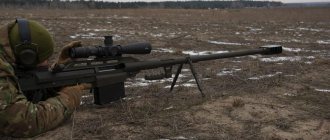15.01.2013
The war in Mali and the deployment of a French contingent to this country gave rise to recall one of the most famous military formations in the world - the French Foreign Legion. This topic will be quite relevant for our compatriots, because many Russian guys are interested in how to get into a foreign legion.
In addition, Legion badges are available to our readers.
History of the French Foreign Legion
First, a little history. The French Foreign Legion was founded under King Louis Philippe I in 1831. The reason for the creation of the Legion was the desire of France to include the territory of Algeria and, accordingly, the need for new combat-ready units.
The basis of the rank and file in the new combat unit was made up of natives of the countries of Southern and Western Europe, the officer corps was formed from veterans of Napoleon’s army. In this regard, traditions have been preserved to this day - only a French citizen can receive an officer rank in a foreign legion, while privates and sergeants are recruited all over the world.
The French Legion took part in more than three dozen major conflicts alone, from Mexico to Vietnam. The foreign legion proved itself most successfully in Africa and Indochina, where France’s positions and interests are traditionally strong. However, there was one sensitive defeat in his history. In the spring of 1954, Ho Chi Minh's superior troops managed to encircle and defeat French troops, including units of the foreign legion, in the Dien Bien Phu area.
Legionnaires in hot spots: Mali
Now the French Foreign Legion mainly performs peacekeeping functions. Although. If you want to test your strength, then try joining a foreign legion and get to the base in Djibouti. Apart from the specific climatic conditions that only a real man can withstand, it is really dangerous in this small country. And recent events surrounding the conflict in Mali have given some units of the French Foreign Legion a chance to prove themselves in battle with a serious enemy.
Some units of the legion are already in Mali and several are in a state of combat readiness to be sent to the conflict zone. The legionnaires in the war in Mali will be opposed by well-trained and well-armed Tuareg formations that have proclaimed the independent state of Azawad and Islamic radical Salafist militants from Al-Qaeda of the Islamic Maghreb, Ansar Dine and other groups.
It must be said that among the fighters of the foreign legion there are quite a lot of Russian guys. They now face a difficult task - a new battle against global terrorism. One cannot underestimate the capabilities of Islamists in Africa and consider that Mali is too far from Russia. This African country has large deposits of uranium, and allowing extreme radicals, who are in principle incapable of dialogue with Christian civilization, to access the sources of such raw materials is suicidal.
Therefore, we should now wish military success to the Russian guys in the foreign legion. While they are waging war in Mali now, they are doing everything possible so that we do not have to fight it on the streets of Moscow and other Russian cities in the foreseeable future.
Legionary. Who is he?
There is a category of men for whom the adrenaline obtained in everyday life, even through extreme sports, is not enough. Young men who want to go through a real school that can mold them into men, but for whom the armed forces of their home country are not exotic and edgy enough.
Former career military personnel who have not reached the age of forty, who want to once again feel the incomparable smell of weapon steel and powder gases. Or just tough guys who are tired of the everyday hustle and bustle. All of these are potential legionnaires. By the way, unlike the early period, persons who have serious problems with the law in their country will not be able to enlist in the French Foreign Legion. Nowadays, information about the background of candidates is checked through Interpol channels.
French Foreign Legion. How to get?
The French Foreign Legion provides the opportunity to join its ranks for almost everyone. To do this you must be:
- - a man (women are not accepted into the Legion under any circumstances);
- - aged 17 to 40 years (seventeen-year-olds will need parental permission certified by the French Embassy);
- - physically fit for service in a foreign legion;
- - holder of a valid passport and is legally present in France.
Immediately forget about all offers of “help” when entering a foreign legion. The President of France himself will not be able to influence the decision to enroll a candidate. Those who know French can search for information themselves using the query “legion etrangere recruitment”. First of all, you need to contact one of the information and recruitment centers in continental France.
They are in the following cities: Paris, Lille, Strasbourg, Nantes, Marseille, Lyon, Bordeaux, Toulouse, Perpignan and Aubagne. Afterwards you will have a preliminary interview and an initial medical examination at the selection center in Paris. Then the main selection stage begins at the base in Aubagne near Marseille.
Candidates for admission to the foreign legion undergo three types of tests: - psychotechnical. You will be asked many questions about attention, memory and logical thinking, as well as about your background in additional tests. At this stage, it is extremely important to answer truthfully; believe me, experienced psychologists will quickly be able to recognize deception and then your chances of admission will be close to zero. By the way, think again if you want to appear “too smart” on tests. Still, the Legion is not Oxford. — in-depth medical examination.
Be prepared for the fact that close attention will be paid to the health of your teeth, so we recommend visiting your dentist in advance. It is also necessary to have a medical card with you. Candidates with serious illnesses such as hepatitis, HIV, diabetes and some others have no chance of entering the French Legion. - physical tests.
You will be asked to pass fairly easy standards, for example, to do at least 4 pull-ups on the bar, to climb without the help of your legs to a five-meter height on a rope, to do a standard abdominal exercise 40 times, as well as a running standard: shuttle running or endurance running (at least 2800 meters in 12 minutes). As you can see, the standards are inferior even to the requirements adopted by the RF Armed Forces.
If you are not accepted, you will be given monetary compensation - about 30 euros per day of being a candidate. If there are no problems at this stage, then you can be congratulated on finding a new family - Etrangere Legion! After signing a five-year contract, you receive an “anonymous document” - a document in which your name, date and place of birth will be changed. By the end of the first year of service, those interested can submit an application and, if considered positively, serve in the legion under their own name.
Material side. Salary, benefits of foreign players
Those who want to earn money are interested in the salary in the foreign legion. Don't believe it if they tell you about mountains of gold. Only a private who enlists will be able to earn at least 1,043 euros, and will also receive free accommodation and food. In addition, there are a number of allowances depending on the region of service, participation in hostilities, length of service, and rank.
Today, the highest paid unit is the 13th Demi-Brigade of the Foreign Legion, stationed in Djibouti. An ordinary legionnaire of 13 DBLE after a year of service can count on at least 3,500 euros per month in “net” salary. Although, Russian legionnaires who are now fighting Islamists in Mali may have even larger bonuses.
Legion soldiers are entitled to annual leave of 45 working days. Those who have served for 3 years have the right to apply for French citizenship. Legionnaires who are wounded in a military operation have an unconditional right to obtain French citizenship. For eight years of impeccable service, a substantial bonus in the amount of two annual salaries is awarded. Those who have served in the French Foreign Legion for more than 19 years guarantee themselves a lifelong pension of at least a thousand euros.
Service in the Foreign Legion
So, after being accepted into the ranks of the French Foreign Legion, you will have to go through the training phase on the basis of the 4th regiment. During this time, you will learn the traditions of the French Legion, undergo mountain and technical training, and complete a number of difficult forced marches. Be prepared for the fact that the loads may exceed those familiar to those who have gone through our “trainings”. Not everyone is able to withstand them and become a full-fledged fighter of the foreign legion. The final test will be the “March of the White Caps,” during which recruits will have to overcome more than 100 km of rough terrain in full gear.
After this, return to Aubagne until distribution to the unit and place of permanent deployment. At the moment, the French Foreign Legion includes 11 regiments. 7 of them have permanent locations in mainland France, and there is also a parachute regiment in Corsica, an infantry regiment guarding the French spaceport in Guiana, a unit in the Comoros Islands and a semi-brigade in Djibouti.
In addition, parts of the legion can be quickly transferred to anywhere in the world, as they are now in Mali, for example. A career in a foreign legion is made solely on the basis of success in service. According to statistics, every fourth legionnaire eventually becomes a non-commissioned officer, and every tenth reaches the officer rank.
Absolutely every legionnaire is a superbly trained fighter. At the same time, the positions of a cook, musician, computer scientist or paramedic are also replenished from the legion, without the involvement of outsiders. Soldiers are given the opportunity to leave the unit's location after 17:00, but must be present at the morning formation at six o'clock. However, we should not forget that the Foreign Legion is not an institution for noble maidens, but a place where real military professionals are forged, and accordingly, not everyone will have the strength to be fired.
People from 136 countries of the world serve in the legion, which means that manifestations of racism are a direct path to expulsion. In much the same way that the traditions of “compatriotism” were strong in the Soviet Army, they are also strong in the foreign legion. A significant percentage of the total number are people from Slavic countries: Russia, Ukraine, Belarus, Croatia, Serbia, Slovakia and others. Naturally, they try to stick together and help each other.
Many Russian guys are naturally interested in issues related to hazing. Of course, as in any army in the world, this phenomenon is present to some extent in the French Foreign Legion, but on a much smaller scale than in our army. In addition, the command, to put it mildly, does not welcome manifestations of hazing. During working hours it is customary to speak French. Please note that the relationship between sergeants and privates differs from those in the post-Soviet space. Especially if you want to serve in the legion longer.
Foreign Legion units
In total, about 7,500 people serve in the French Foreign Legion. This is not very much, but the highest professionalism of everyone, from private to brigadier general, makes the French Legion a formidable fighting force in conflicts of any level.
One of the most exotic places of service is the Kourou base in French Guiana, where the 3 REI (3rd Legion Infantry Regiment) is stationed. This military unit is responsible for protecting the cosmodrome. Those who get there should prepare in advance for the difficult tropical climate, swamps and hordes of insects. This will be felt especially acutely by those who will undergo an internship at the CEPE camp in the middle of the equatorial forest. Think carefully about whether you are up to such a test?
More comfortable living conditions, but no less simple service, are promised by assignment to the 2nd Parachute Regiment in Corsica. Despite the fact that there will be many bars and cafes at your service right on the territory of the unit, you will not be allowed to forget for a minute that you are a Legionnaire and what stands behind this proud name. 2 REP is a regiment that tries to gather the best of the best. Each battalion of the regiment has its own narrow specialization, from night operations and urban assault to mountain and sabotage operations.
The oldest unit that carefully preserves the traditions of the Legion is the 1st Regiment, located in Aubagne and working with recruits. The main administrative services are concentrated here.
There is also a kind of “academy” for officers and sergeants. This is the 4th Regiment, stationed at Castelnaudary in France. Young legionnaires are also trained here.
The 1st Armored Cavalry Regiment is located in Orange and is considered a powerful offensive unit within the Legion. The regiment regularly goes on combat missions to different parts of the planet.
The 2nd Infantry Regiment is also ready to promptly leave the French city of Nimes and arrive at the new place of duty.
The only unit of the Legion that does not leave continental France in peacetime is located in Avignon. This is the 1st Engineer Regiment, which is considered one of the best of its kind in the world. It also includes a unit of elite swimmers-saboteurs.
The 13th semi-brigade in Djibouti is another place where not every physically and psychologically strong man can endure service.
There is also a small special unit in the Comoros - DLEM
In some of these regiments and units of the French Foreign Legion, the service is a little easier, in others it is more difficult, but in each of them they train first-class specialists, and the path to this lies through hard daily training, sweat and possibly blood.
Russian traditions in the French legion
After the Bolshevik revolution in Russia and the defeat of the white movement in the civil war, the ranks of the legion were replenished by a significant number of former officers of the tsarist army, distinguished by excellent training and discipline. Largely thanks to the Russians, France was able to achieve great success in the conflicts of the 20s against the Tuaregs, Druze, Kabyles and other rebel tribes of Africa.
It was not without reason that recruiters began the hunt for tsarist officers immediately after Wrangel’s squadron entered the port of Constantinople. Five representatives of that generation received general ranks in the French Foreign Legion.
Since the beginning of the 90s, the number of Russians in the Legion began to grow again. Basically, these were not novices in military affairs, but retired officers of the Soviet Army or retired sergeants, who often had experience in combat operations, including in Africa - Angola and other countries.
Joining the French Foreign Legion for Russian boys in those years was a chance to start life from scratch. Much was falling apart in our army and society, however, when the Motherland again needed real defenders, many legionnaires returned to defend Russia during the wars in Chechnya, without demanding any payment for this.
Whatever unit of the Legion the Russians, Belarusians, and Ukrainians served in, they were always among the best fighters, the most persistent and well-trained. And now we wish good luck to the brave Russian guys in the French foreign legion in their fight against Al-Qaeda and their allies in Mali, a country otherwise nicknamed “African Afghanistan.”
Although, is it worth looking for a distant shore if we have formations and branches of troops that are at least no less legendary, for example, the special forces of the Internal Troops, military intelligence. Try to first pass the maroon beret test before talking about the fact that in Russia, Belarus or Ukraine there is no worthy army elite.
Additional materials. French Foreign Legion – anthem, photos and videos
Also in this article you can watch a video about the French Legion, photos from various units, and also hear the anthem of the Foreign Legion.
← Flag of the 21st Airborne Brigade Kutaisi Flag of the Tula Airborne Forces →
Everything about serving in the French Foreign Legion
The French Foreign Legion was founded on March 9, 1831, King Louis-Philippe d'Orléans issued a decree on the formation of troops, prohibiting their use on French territory. The king wanted to remove from the country the mass of mercenaries of Charles X of Bourbon, the remnants of the foreign regiments of Napoleon I, and emigrants who took part in the uprisings in Poland and Italy. These people had real combat experience and within the country posed a serious danger to the existing political balance.
At the same time, the expansion of France in North Africa, begun by Napoleon, is unfolding with renewed vigor. Thus, the king killed two birds with one stone, directing the combat potential of professional soldiers to expand the sphere of influence of France. A century later, world geopolitics has changed. The colonies achieved independence; there was no longer any need to expand French influence. It seemed
The Legion has outlived its usefulness. However, no. Every year the French parliament puts to a vote the question: does the country need an army of mercenaries? And every year the answer is yes. Currently, the Legion consists of seven regiments (including the famous 2nd Parachute, which includes the special forces of the SVAR Legion, staffed only by volunteer officers and corporals), one demi-brigade and one special detachment.
foreign legion headquarters
Locations:
— Mayotte Island (Camores Islands),
— Djibouti (North-East Africa),
- Mururua Atoll (Pacific Ocean),
- Kourou (French Guiana), Corsica and in France itself.
Candidate
A citizen of any country can join the Legion. The main thing is that the applicant is between 17 and 40 years old, has an ID card with him and is physically fit, of course. First you need to go through a preliminary selection at one of the reference and recruitment points.
Next is selection in the city of Aubagne (southern France), where the “conscript” is examined by doctors, subjected to psychotechnical tests, and here he must show all his physical capabilities. Approximate requirements for a volunteer: 30 push-ups, 50 squats, climb a six-meter rope without using your legs, run 2800 meters in 12 minutes.
If the candidacy is approved, then the first contract is signed for a period of at least five years. Even if a man is married, he is accepted into the legion as a single man. Another point in the contract: if desired, the candidate can hide his real last name. Previously, this provision was intended to provide a second chance for those who wanted to turn the page or who wanted to escape.
The Legion still retains this clause, often leaving only the first letter of the previous surname.
Service
For the first four months, volunteers undergo a young fighter course. Next is assignment to a specific branch of the military with the rank of “private.” You can count on the position of warrant officer by the end of the first contract.
Before the first five-year contract, you can resign or extend your service for six months, three years or five years. And so on until 15 years have passed since the visit to the legion. After three years of service, a legionnaire can apply for French citizenship.
According to the terms of the contract, two out of five years will have to serve in overseas territories. There is no fixed salary here - the amount consists of basic tariffs and allowances for climatic conditions, the degree of severity of the conflict, the category of the unit in which you serve (sabotage detachment, front line or rear during trench warfare).
We can only add that there is a special allowance for service outside France.
So, you have decided to join the French Foreign Legion
Many men dream of joining the French Foreign Legion in order to break with the whole world, to return to their homeland as a gallant officer, or even not to return at all. Think about it first... Is it worth it? As soon as you give yourself into the hands of the Legion, you will lose contact with the outside world for five years, the Legion will become your Motherland, your family and home. No wonder the legion’s motto is: “The Legion is our Fatherland.” And, quite naturally, you are not welcome there with open arms. I believe you have thought about it and decided everything for yourself. And if you still decide to try yourself in the military field, then read these essentially simple recommendations. If ignorance of the language stops you, you will be taught French, and you will have plenty of practice. Mercenary activity in most countries is punishable by law, so selection points are only in France itself. No one will help you get there - it’s all a scam, even embassies won’t help. Go to Paris, definitely on Sunday or Tuesday.
From Paris on Mondays and Wednesdays there is a departure to Aubagne, you may be late. Here is the address: Paris 94120, Fontenay-sous-Bois – Fort de Nogent.
And phone: 01 49 74 50 65
.
There are several options to get to the recruitment point: on a tourist package or illegally. I don’t recommend doing it illegally - problems may arise upon returning to your homeland, and even at the time of recruitment. If you get to the recruiting point, you will see a military unit. There is always a legionnaire at the entrance - go up to him and be silent. Be diligently silent, otherwise he won’t let you in. Then he will ask you about your nationality (you answer “Rus”) and demand your passport. After that, you will be taken inside, and then, after some time, you will be searched and given a medical examination. This is the primary selection. For a while you will get up at 5.00 in the morning, make your bed, clean, help in the kitchen, carry something... For disobedience - push-ups or a slap. Before being sent to Aubagne, you will undergo another medical examination - a more complete one. You will then be transferred by train to Marseille. From there it’s on to Aubagne. In Aubagne you will be searched even more thoroughly, and then given clothes, toiletries - everything you need. Then they will move in. You will be working again, but it will be even better for you - it will not be as boring. Most importantly, you will take additional tests. This is why you came to Aubagne.
Presumably, if nothing has changed, you will undergo three types of tests: psychotechnical, medical, physical. Psychotechnical: tests for attentiveness, memory. It all depends on your quickness. Medical: medical examination and questions about injuries and illnesses. I recommend getting your teeth treated. Physical: 2.8 km cross-country in 12 minutes, it is advisable to run more. I also recommend doing more push-ups; for any offense you will have to do push-ups. You will also undergo an interview where you must tell your entire biography. The main thing is to answer truthfully, quickly, and clearly. The interview will take place in three stages. Each next one repeats the previous one, this is a test for lice. Then everyone will be lined up and the names of those who have passed the selection will be shouted out. There are about twenty of them, as a rule. If you are not in this top twenty, you are paid money (25 euros for each day that you lost). Not enough for a ticket home, but at least it’s something. Maybe the next attempt will be more successful. Otherwise, they will start chasing you. Cross country, swimming... Then you take the oath and go to boot camp.
Sequence of selection and training for the French Foreign Legion
Camp near Obanya
Everyone is sent to camp after dinner. Everyone is given back the clothes they arrived in and taken to the station, accompanied by several legionnaires. There everyone gets on the train and goes to the south of France to Marseille. The train arrives there the next day at approximately 6-7 am. Immediately at the Marseille station, everyone transfers to the train, which arrives in Aubagne. In Oban, buses are already waiting to pick up all arriving candidates and take them to the Legion’s central base.
The first foreign regiment, stationed at the base near Aubagne, is engaged in the recruitment and initial training of all recruits.
Upon arrival at the base, everyone is taken to the volunteer building, where another search of personal belongings takes place. It should be noted that it is much more thorough than the very first one, conducted at the recruiting point. As a rule, the only personal items allowed are toiletries, a towel, flip-flops, a phrase book or a dictionary. After this, the volunteer is given the most necessary things. These are two pairs of panties, short sports shorts and a T-shirt (they will replace a tracksuit); if you don’t have sneakers with you, then you will be given tennis shoes. They will also give you a pack of disposable razors, shaving foam, a toothbrush and toothpaste, two bars of soap - one for showering, the other for washing clothes, toilet paper and two sheets.
After the items are given out, the volunteer is taken to a room where they will be shown a bed. Very often, recruits of completely different nationalities live in the same room, then from time to time they can be shuffled.
The daily routine at boot camp is very similar to that at the recruiting station. The main difference is that getting up occurs much earlier - at 5:00-5:30, and breakfast, respectively, at 5:30-6:00. The shutdown can also sometimes be delayed, but this rarely happens. There is practically no free time - you have to work a lot, but it’s still better than just sitting around doing nothing. Here, work is the best way to experience the life of the legion and meet other legionnaires. Very often they take people to work outside the training camp, for example, to the home of veterans of the legion - it’s a 40-minute ride by minibus one way. Sometimes there are trips to the officers' holiday home in Marseille - it's a 20-minute trip along the Mediterranean coast. But still, most of the work takes place on the territory of the unit.
Recruits usually spend all that little free time in the sports town, using logs instead of benches. Usually, all recruits here are divided by nationality, but in principle, if you wish, you can go and talk with Poles, Slovaks or volunteers of any other nationalities without any problems - it’s all just a matter of knowing foreign languages.
It should be noted that serious conflicts never arise, and in which case it is not worth escalating, since everyone involved is immediately expelled without clarifying the reasons.
And another interesting feature - for the time spent in the training camp in Aubagne, recruits are entitled to something like a salary. Everyone receives 25 euros for each day plus 40 euros for each day off.
Psychological test for joining the French Foreign Legion
Well, of course, each recruit undergoes various tests. Actually, that’s why everyone was brought to the camp.
The first test is psychological. It is usually conducted by a corporal. Explanations about the test are usually in French, sometimes in English, but quite possibly in Russian. It all depends on the nationality of the legionnaire who will conduct this test. It consists of many small tests that last one after another for 1.5 - 2 hours. In this case, a fixed amount of time is allocated for each subtest.
All volunteers are given tests in their native language. If the test was issued in another language, then you must immediately, without fussing, raise your hand and say something like “corporal, not Russian or Russian,” that is, explain that the test was not issued in Russian.
A psychological test usually includes the following tasks:
1.
In one of the tasks you will need to
draw a tree
. Moreover, according to the test conditions, it will be necessary to draw only deciduous trees, excluding any coniferous trees (spruce, pine, etc.) and palm trees. After this, you will need to choose from the 20 proposed images of trees the two that the volunteer likes the most. It is best to draw and then select simple trees without a highly developed root system, a large number of branches, and so on.
2.
Another possible test
is the gear test
. The gist of it is this. Drawings with gears will be given, and from them it will be necessary to determine in which direction gear D will rotate if, for example, gear A rotates to the left. There will be several such drawings, and with each new one the complexity will increase. Gradually, belt drives, a pin, and so on will be added to the three gears in the pictures. As a rule, answer options will be given next to the pictures, and you will need to think carefully and choose the correct one.
When solving this problem, it is necessary to remember everything that was taught in physics lessons, or rather mechanics. There is no need to be afraid that with each new test task the difficulty will increase. On the contrary, each time it will be increasingly easier to navigate the solution to the proposed problem.
3.
The next test
will be given a drawing, and in addition to it 4-5 very similar pictures
. You need to choose one of them that is the same as the one originally proposed. When solving this problem, the most important thing is to concentrate your vision well on the proposed drawings.
4.
will be offered
that will show cubes arranged in several rows
. In this case, the rows can be of different thicknesses and heights. You will need to quickly determine how many cubes are shown in the picture and choose the correct answer from the ones offered. When solving this problem, you will first need to concentrate your attention.
5.
The figures are depicted
, and they are arranged in a 3x3 order. One of the figures is missing from the picture. It is necessary to select the missing figure from the proposed options. Here again attention plays a decisive role.
6.
The volunteer is given
a list of questions
. You will need to carefully read each question and answer it “yes” or “no”, or for example + or -. The questions there are of a completely different nature. For example - Do you feel good in a team? Do you like loneliness? Have you ever had a stomach ache? Have you ever lied in your life? Have you ever stolen?
When answering questions, you must read them carefully and answer them just as carefully. Sometimes there are two opposing questions, and if a positive answer was given to the question of whether you feel good in a team, then a positive answer about loneliness will be clearly inappropriate. The most interesting thing is that no one reads the answers in the future, and they are checked by applying a grid. It is unknown what the construction of the grid depends on.
7. Memory test
. The subject will be given a map of a residential area, on which various houses and buildings will be marked. Everything shown on the map will be accompanied by comments like “school”, “gas station”, “shoe store” and so on. Street names will also be signed. The volunteer must memorize this card within five minutes, after which he will be given exactly the same, but absolutely blank card. There you will need to mark objects from the previous map. True, there is one relaxation - if there were about 25-30 marked buildings on the original map, only 10-12 need to be marked on the clean one. In order to perform well on this test, you only need to remember the buildings themselves, with their names and location relative to others. If you have difficulty remembering the entire map, then you need to focus your efforts on remembering, for example, only the top of the map, or only one corner of the map, or only gas stations and stores, and so on.
8. Attentiveness test
. The volunteer is shown a set of randomly repeating symbols, 7-8 in total. These symbols are arranged in rows on 5-6 sheets. A sequence of two characters will also be given as a sample. It is necessary to sequentially cross out these two symbols on the sheets of paper over a certain period of time. In general, successful passing of the test depends only on the attentiveness of the test taker.
Medical test
The medical test is carried out in another building. As a rule, a group of volunteers of 10-12 people is called to complete it. Arriving at the building, everyone called strips down to their underpants and sits on a bench to wait their turn. Here you need to be very careful, because everyone is called for a medical examination by last name, and you must not only not miss yours, but also answer when you were called.
The medical examination itself consists of three stages. First the volunteer goes through two corporals
. Here the volunteer will have a urine test, check his vision, the condition of his teeth, write down where the scars are on the body and in what circumstances they were received. The volunteer is then asked various questions, including:
- Have you ever had jaundice (measles, mumps and other diseases)?
- Have you undergone any operations?
- Were there any fractures or serious injuries?
- Did you play sports, what kind and how much?
- Why do you want to join the Legion?
- Briefly tell your biography.
After all this, the volunteer moves to the next room - this is the second stage of the medical examination. In the room, the adjutant will ask various questions. Among these questions there will definitely be those that have already been asked before - you need not to be nervous, not to be rude, but to answer it again. Communication with the adjutant occurs through a legionnaire, who translates into and from Russian.
Then the third stage - in another office there is a captain, who once again examines the teeth, ears, listens to the lungs and examines the body. Then he asks questions again, and as a result, the volunteer is either denied entry into the legion or allowed to undergo a physical test.
Physical test
After successfully passing the medical test, volunteers are sent to a physical test. It consists only of cross-country, which usually takes place in the morning. The cross-country race takes place in a standard stadium with a circle length of 400 meters, the tracks of which are rubber-surfaced. If it’s winter, then the cross-country is rented directly to the parts around the hangars. Before the run, all volunteers are given T-shirts and numbers depending on how many people take the test.
Everyone runs to the stadium instead of walking. Distance - approximately 1-1.2 kilometers. Having arrived at the stadium, the whole group must line up at the start and then run laps against the clock. According to the test conditions, you need to run at least 2.8 kilometers in 12 minutes. But at the same time, having run the required distance, you cannot stop - you need to continue running further until the allotted time runs out.
The command to run is given using a whistle; the second whistle stops the test. Each circle is marked by a legionnaire in the general list. After finishing the test, everyone runs back to the unit, where they hand over their T-shirts and go to the shower.
In addition to being able to run well, you also need to be good at push-ups. The fact is that for any offense the command “pump” can follow, and the most important thing for a volunteer is not to be among the first to get tired.
Gestapo
No, no one is going to torture volunteers with a hot iron. This is the figurative name for going through the interview process with legion security officers. This interview aims to create a database about the future legionnaire. The questions that will be asked during the interview can be completely different and on different topics. You should answer as truthfully as possible; if it doesn’t work out, then you don’t need to create a too beautiful legend for yourself. There will be people sitting in front of the volunteer whose job is to see through the interlocutor, and their decision largely determines whether the volunteer will go further or not.
The interview process takes place in three stages. At the first, a sergeant speaking Russian will communicate with the volunteer. This may be a native of the former Soviet Union, a Pole, a Bulgarian or another Slavic nationality. Mostly questions are asked about life before arriving at the recruiting station. It turns out the biography, the reasons why he came to serve in the legion, whether there were any problems in his country and other similar questions that will complement each other and ultimately show the full picture.
The most important thing here is to say exactly what was previously told at the medical examination and recruitment point. The second stage is also a sergeant, and the same questions are asked only in a different sequence. The purpose of this stage is to find out how truthful the volunteer was before. The third stage - an officer no less than a lieutenant, basically the same questions, but this time communication takes place through an interpreter.
We don’t think it’s worth reminding that a volunteer will be able to get an interview with the Gestapo only if all previous tests have been passed successfully. It is also worth keeping in mind that all three interviews can be conducted on one day, or they can be divided into several. So the only thing that can help in this case is to answer all questions clearly, quickly and, most importantly, truthfully.
Rouge
Rouge - comes from the French word "rouge", which translates as red. Previously, all those volunteers who passed all the checks and were waiting to be sent to boot camp wore a red bandage on their sleeve. Currently, this custom is no longer in effect, but the name itself has been preserved. Only those volunteers who successfully passed the Gestapo, that is, who for one reason or another were not eliminated by security officers, get into the Rouge.
Legionnaire candidates are selected on Fridays during morning formation. First, groups are called to take tests and do some chores, then the names of candidates for the rouge are called, and everyone who has not been named is sent to the logs. Those who were called by the officers leave the general formation and line up in the place where the gun is stationed. As a rule, 18 people are named, rarely when this number exceeds one or two people. When the last name is called, the command “civil” is heard for the remaining ones. Those who were not named go and hand over the things given to them, receive theirs, plus cash payment for the time they were in the legion. Payment is calculated based on the number of days. After that, everyone goes on the train and goes home - this time the legion is over for them. But no one bothers you to try again after a while.
All those who are enrolled in the legion first of all go to the hairdresser. There they shave all their heads. After this, you must hand in your sports uniform, and in return you will be given a new military uniform, except for a beret with a badge, and boots. They give the uniform that the entire legion wears. Then they give you a new tracksuit, but with the emblems of the legion. They also give you new toiletries and move you to a separate room. The accepted legionnaire will spend further time with his comrades in arms, except for free time. There, no one forbids you to go and communicate with your people from Russia.
The daily routine is also structured differently. Now they wake up the Rouge first, and then the rest of the camp. Rouge is also on night duty at the entrance to the volunteer territory and at the entrance to the building. The shifts are only 2 hours long, but naturally you have to sleep less. Now there will be practically no work on the territory, but now there will be constant cross-country races (5-7 kilometers each), swimming (about an hour in the pool at any desired time), and acquaintance with the life of the legion is also provided - they show films, take them to a museum, and so on. It will be necessary to spend a week in such an environment, until next Thursday. On Thursday, all former Ruzhovites are sworn in and given the traditional legionnaire's beret with a cockade.
Well, early on Friday morning, the newly minted legionnaires are sent to a training camp near the city of Castelnaudary in the Pyrenees mountains in the Toulouse region.
Salary in the French Foreign Legion
Salaries (salary)
Starting salary - 1043 euros per month with free housing and food. Further, the salary increases depending on length of service and place of service. For example, a corporal (3 years of service) who serves in France receives 1226 euros. And a corporal who serves in Djibouti costs 3,626 euros.
Average score and top ten
The remaining three months continued army training in a special unit. There was enough shooting and marching, and they began to receive money like ordinary legionnaires. Then it was €1.1–1.2 thousand per month, now it is €1.4–1.5 thousand. This is, in fact, the French minimum wage, as in civilian life. All the money went into our account; we were given an advance in cash of €200–300, but it was problematic to spend it either. In principle, they were released into the city, but not one at a time, but in a group; this decision depended mainly on the lieutenant, platoon commander (or military officer, this is a rank like ensign, an ordinary soldier could earn it over time, without graduating from college) . But if a platoon fails due to discipline or for some other reason, then the whole team suffers because of one offender. That is, the answer is all for one.
After four months of study, newly minted legionnaires pass exams on combat and physical training and knowledge of the French language. Based on the exam results, each soldier occupies a certain place in the unit (average score based on the sum of all disciplines). Moreover, one subject can be covered by another: for example, French is bad, but physical training is excellent, and as a result the average score is high.
Those in the unit (70–80 people) who are in the top ten can choose a regiment for further study and continued service. I got into this top ten and chose the most elite regiment of the Foreign Legion - the paratrooper REP-2.
The largest military operations in which legionnaires took part
- Participation in the assault on Sevastopol (1853-1856)
- Cargo protection in Mexico (1863-1867)
- War for the French Protectorate in Indochina (1883-1885)
- Fight against the liberation movement in Madagascar (1895)
- Participation in the First and Second World Wars
- Indochina (1940—1954)
- Algeria (1953-1961)
- Counterinsurgency in Zaire (1978)
- Lebanon (1982-1983)
- Persian Gulf, capture of Iraq's Al Salman airport (1991)
- Peacekeeping actions in Magadisha, Bosnia (1992-1996)
- Kosovo (1999)
- Afghanistan
- Mali (Africa)
Comment to the article:
A similar unit, as an alternative to private military companies (PMCs), which have been controversial recently in connection with the events in Syria, could be created in Russia. Yugoslavia, the Middle East, South Ossetia, Abkhazia, Vietnam, Cuba - this is just a small list of countries where we could maintain our influence without the use of a regular army.
Dangerous jumps
After training, the recruits were transferred again to Aubagne. “Monitors” came there, or, as they say in our military registration and enlistment offices, “buyers”, they took soldiers into combat regiments. The main regiments of the Foreign Legion, besides the mentioned REP-2, are the 2nd Infantry (Nîmes, France), the regiment of chasseurs-demolitionists, the 1st Cavalry (they, of course, have tanks, not horses). Another 13th semi-brigade, stationed in Djibouti, then in Abu Dhabi, and then it was returned to the territory of continental France. There are also small units in different places, for example, near Madagascar (but novices are not sent there, only experienced fighters serve).
The REP-2 I chose is stationed on the island of Corsica. A “monitor” with the rank of military officer came for me and the others who were in the regiment, took away my personal files, and we left for Corsica. First of all, beginners are taught to jump with a parachute. In total, you need to perform six jumps, you are given a “brevet” - this is a badge, worn on the right, it is numbered, that is, individual - and only then they are distributed among the companies of the regiment.
Second mission: injury and long treatment
After six months of hostilities, our unit was returned to Corsica. To be honest, when leaving Afghanistan, I thought that I would never see this country again, but a year later I found myself there again. The 2nd company from REP-2 and our platoon assigned to it were transferred to strengthen the positions of the Foreign Legion in the mountainous country. This time I was no longer in a reconnaissance platoon (at that time I was a grenade launcher, and a grenade launcher is not a pipe on the shoulder, it’s like a mortar, but almost silent), but a shooter on a French armored personnel carrier, responsible for the 50-caliber Browning heavy machine gun (12.7 mm, like the Soviet DShK).
I fought for a while, and then it happened that during combat duty I received a serious injury (not a wound). Broke my collarbone and dislocated my shoulder. I was sent to a hospital in Kabul, and a French army helicopter came specially to pick me up. My friend, who continues to serve, practically carried me into the car in his arms. I was in a NATO hospital in Kabul for a week. What’s curious is that I was lying in a ward for NATO military personnel - without any special amenities or a TV, and next to it there was a ward for wounded Taliban. So, they had a TV. Doctors are French and Bulgarian.
Then I was sent to France for treatment. Moreover, in the French army and the Foreign Legion they will treat you, even despite the end of the contract, until they get you back on your feet. So it was with me. After the expiration of the five-year contract, I was treated for almost two more years and was in the service all this time, receiving a salary and all types of allowances.
However, not everything there is as sweet and beautiful as you might think. I didn’t get to the hospital right away: first I was taken from Kabul to Paris, and from there to my regiment in Corsica. I arrived dirty, hairy, physically unable to shave. And the regimental medic, who didn’t go to combat at all, says to me, the vacation is over, get yourself in order! Looking at such people, you begin to think: would you like to continue serving with such “comrades”? Moreover, this attitude exists in all armies of the world. I communicated with Navy SEALs from the United States and with other fighters - it’s the same everywhere, don’t think that this is unique to Soviet or post-Soviet troops.
Bastille Day. Legionnaires not only participate in special operations, but also march in parades
After the hospital, he returned to the regiment again, served, but did not jump with a parachute; at the same time, he received further treatment in the local medical unit and underwent procedures. But I had to give up my military career. I already received €2 thousand a month in Corsica. Before demobilization, I was transferred to the “mother” regiment in Aubagne, where there are no parachute allowances and I was supposed to receive €1.5 thousand. But since I was injured during combat, my insurance covered the difference, and they continued to pay me €2 thousand. Then there was another operation: it turned out that necrosis of the femoral head had developed from parachute jumping, I was fitted with an American titanium prosthesis, also under insurance.
First mission: “refuseniks” and shelling
According to the rules of the French army, which also apply to the Foreign Legion, it is impossible to send a soldier who has not served for at least a year to a combat area. So I spent a year studying in Corsica. In the regiment we already received €1.8 thousand as paratroopers (now €2.1 thousand). And then there was an order to send the unit to Afghanistan. Everyone is going, except those who have expressed reluctance. There are such fighters too. The man asks to be sent to report to the company commander, explaining the reason to the platoon commander. Then the company commander talks to him. If a soldier really does not want or cannot for some reason get to combat positions, he is not forced, he is transferred to another unit for rear work. This is, of course, bad for your career. The question is, why did you want to join the Foreign Legion if you don’t want to fight? So, in essence, only volunteers go to war. On my first mission to Afghanistan (and I was there twice), there were no refuseniks. The second time they were.
During my first mission I spent six months in Afghanistan. We saw enough of everything: we came under artillery and mortar fire, and sniper bullets whistled around us, and they threw grenades at us. Several comrades died. I remember such an incident. We took the position where we were ordered. To do this, the local residents had to be driven out of there. And in Afghanistan it is a guerrilla war. If there are fighting going on in Ukraine in the east now, then at least it is clear where the front is and where the enemy is. There, the enemy can be everywhere, 360 degrees. So, another group of legionnaires took a position next to us. We couldn't see them because of the folds of the terrain. At some point we heard: something exploded at our neighbors, then automatic fire immediately sounded, audibly from our weapons. A little later I found out what happened. My friend Murat told me, he still serves in the Foreign Legion. He says they are sitting, everything is quiet, and suddenly a hand grenade falls right on the position. Click - the drummer is in action! Well, he thinks, Khan. But luckily, the grenade hit the slope leading into the river. In a couple of seconds, she rolled down there and rushed, without catching anyone with the fragments. The legionnaires immediately opened fire on the passage leading to the position, but there was no one there anymore. By the way, in combat positions no one waits for commands or shouts “Hands up!” and other nonsense. Immediately fire to kill, otherwise you won’t survive. In that case, the guys decided, the locals, who sympathized with the Taliban, most likely sent a boy with a grenade, who knew the area perfectly and could quietly get through everywhere. He threw it and immediately disappeared. After the explosion and shooting, the commander sent us to comb the area. We made a detour, returned to the position, and the local “babais”, whom we had initially driven away, were again sitting there, smoking their pipes. That's how they fought.
White cap. After passing the exams, recruits are given a specific headdress - the distinctive sign of a legionnaire.
We were often fired upon from nearby villages not only with small arms, but also with unguided rockets and mortars. For one month I simply couldn’t raise my head! Even if you had a free minute (and this didn’t happen often) and you were sitting listening to music or watching a movie, one earphone was in your ear, the other was dangling so you could hear what was going on around you. If you hear the sound of a shot, say, a mortar, you have a second to pull the earphone out of your ear and throw yourself on the ground. It died down - you listen to the gadget again. Although not all Afghans supported the Taliban, there were those who were against them - our allies, local militias. These are those who advocated modern values, wanted to have good medicine, education, and equal rights for women. They fought the Taliban side by side with us.
Security guard with an apartment in Nice
I retired several years ago with the rank of prime-class soldier, but didn’t go to work right away. They gave me documents to the labor exchange, where I received benefits for about €1 thousand per month. I also received a residence permit in France - it is given to those who have served their contract in the Foreign Legion normally (if they were fired for disciplinary offenses, then the residence permit will not be issued). I took out a mortgage loan from a bank; they give it to former legionnaires without any problems. For 25 years, the rate is 1.5% per annum. I bought an apartment in Nice, where I live. In a very good area, our “residence” (group of houses) has swimming pools, parking lots, and gardens. Now I already work in a security company in Monaco, which also willingly hires ex-legionnaires. I earn about €3 thousand a month, it can be more or less, there is an hourly wage: how much you work, how much you get. My sister also came from Ukraine to Nice, graduated from school, is studying the language for the second year, lives separately from me, but in the same “residence,” her parents and I help her.
I'm going to get French citizenship. Will I stay in Nice later? Time will show. The world is huge and there are many places that are worth living there.
Weapons, cars and salaries
The Taliban were armed mainly with Soviet weapons and those based on them: Chinese versions of AKM and cartridges, grenades, RPGs, LNG, etc. At first we were armed with FAMAS assault rifles, recently they were replaced with standard HK416 weapons ( Heckler and Koch) - an excellent automatic rifle! The cut of the uniform has also changed, the fabric has been improved and become more durable. In general, I, like other soldiers, had three sets of summer uniforms, three winter uniforms, a woolen winter uniform, three sets of thermal underwear, a bunch of T-shirts, socks and other small items. At the beginning of the mission, we were at the main base in the mountains, there were civilian personnel there, the so-called laverys, who cleaned, washed and generally supported the rear. You simply hand over your dirty uniform to them and receive it washed and ironed. Then, as part of a reconnaissance platoon (in a combined battalion under the auspices of NATO), I found myself in positions in close proximity to the enemy. There they lived in tents, slept on cots, washed and cleaned themselves. We ate dry rations for more than four months. But there were no “regulations”, as at large bases, where the entire command, when it was necessary to be in full uniform, polish their shoes, shave often, live strictly according to the schedule, etc. At combat positions they walked, relatively speaking, in flip-flops and a T-shirt and with a machine gun, in a word, how convenient. All movements are carried out only with weapons, this is the standard of the American army, the main force of NATO. Of course, if the commander called, they put on a uniform.
The transport of the Foreign Legion has also changed. During my missions to Afghanistan there were French Gelendwagens from Peugeot (P-4) licensed by Mercedes-Benz (that is, the cube version of the Mercedes). A very passable car, but zero comfort (perhaps even the UAZ is more comfortable): two short, like in a Zaporozhets, front seats and benches in the back. Now the French version of the Land Cruiser is already more comfortable: seats with lateral support and other bells and whistles.
